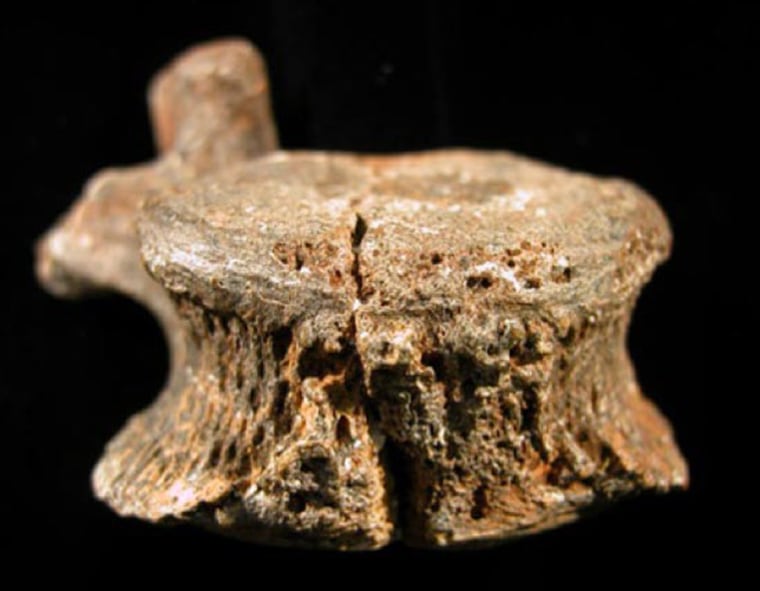The bones of an ancient hominin may hold evidence of the earliest known bacterial infection, according to a team of international researchers who diagnosed the skeleton with a disease called brucellosis.
The discovery of the infection may provide insight into the eating habits of these early human ancestors.
Consisting of 18 mostly incomplete bones, the skeletal remains were found decades ago in the Sterkfontein caves near Johannesburg, South Africa.
The partial skeleton, known as Stw 431, belonged to an adult individual — probably a male — of the late Pliocene hominin species Australopithecus africanus.
Analysis of the bones, believed to be 1.5 million to 2.5 million years old, showed that two vertebrae were dotted with lesions. A previous study concluded the damage was caused by trauma.
Not a fracture
But Ruggero D'Anastasio, a palaeoanthropologist at the University "Gabriele d'Annunzio" in Chieti, Italy, and colleagues contend that the lesions are the result of an acute inflammatory process rather than a traumatic fracture.
"After carefully evaluating all reasonable alternative hypotheses, we suggest that the position, gross morphology and the radiological appearance of the lesions ... seem to be more consistent with the pathological condition of early brucellosis," the researchers wrote in the journal PLoS.
Brucellosis is a debilitating disease whose symptoms include recurrent fevers, joint pain, weakness and profuse sweating.
Primarily found in animals such as sheep or goats, brucella is often contracted from unpasteurized milk and cheese.
The disease is relatively rare today in developed countries, although it is still present in areas such as North Africa and the Middle East.
"As for this Australopithecus africanus individual, the infective agent could have been Brucella abortus. Zebras, antelopes and other South African fauna can carry this bacterial species, which causes spontaneous abortion," D'Anastasio told Discovery News.
According to the researcher, the hominin may have contracted brucellosis by eating fetal tissue from an infected animal.
Might be meat-eaters
"The hypothesis of brucellosis in this australopith has important implications: This is the most ancient case of an infectious disease in a hominin and could also potentially be some of the oldest evidence for meat-eating," D'Anastasio said.
According to Matt Sponheimer, an anthropologist at the University of Colorado in Boulder who specializes on the ecology of early human ancestors in Africa, the study is certainly far from establishing that any australopith regularly consumed meat.
Yet the possibility of some animal food consumption in australopiths is not unexpected.
"Our closest living relations, the chimpanzees, frequently consume animal foods. Given the omnivory of Homo sapiens and our closest living relatives, a similar penchant for animal products among our close fossil kin might be expected," Sponheimer told Discovery News.
According to the anthropologist, far more important would be some indication of the kinds of animal foods consumed, when and why they were consumed, and the relative importance of these foods in their diet.
"We are still a long way away from answering such questions. After all, it is hard enough to get most people to remember what they had for lunch yesterday, much less asking the same of fossils that are millions of years old," Sponheimer said.
